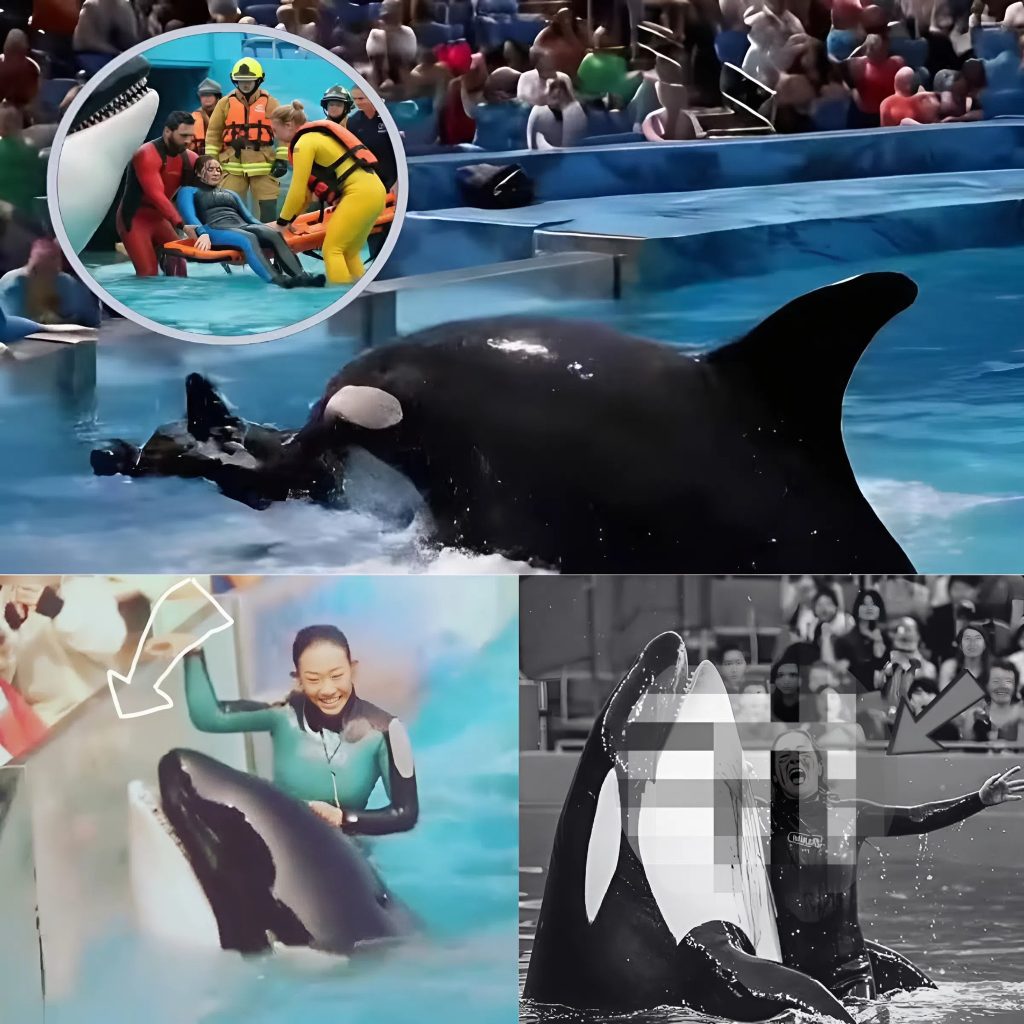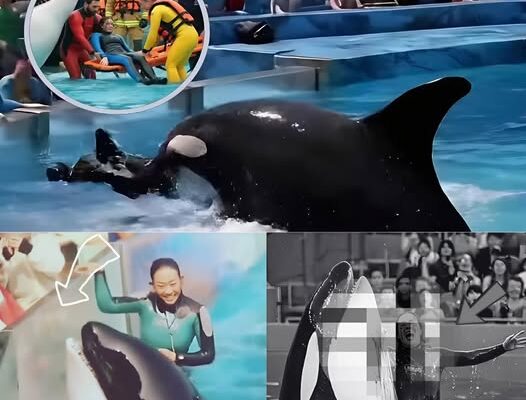
Orca K!lls 40-Year-Old Trainer in Front of Screaming Crowd—They Thought It Was Part of the Show! At first, the audience clapped. Then came the bl00d. During a routine trick, the orca suddenly lunged—dragging the veteran trainer under. What happened next left families crying, children screaming, and staff frozen in shock. SeaWorld would never be the same again. On what began as a bright and sunny afternoon in Orlando, hundreds of visitors filled the stands at the Shamu Stadium, eager for an unforgettable marine life performance. The music was upbeat, the trainers smiled, and the orcas performed flawlessly—leaping from the water, splashing the front rows, and responding to hand signals. Among them was one of SeaWorld’s most famous orcas, a massive male weighing over five tons, known for his size, strength, and intelligence. The trainer, with more than fifteen years of experience, had worked with the animal countless times, building what many believed was an unbreakable bond. No one in the crowd could have predicted the deadly turn the show was about to take.

As the performance reached its mid-point, the trainer prepared for a signature stunt—lying at the edge of the pool, inviting the orca to breach and glide beside her in a display of trust and skill. The audience clapped, expecting another seamless routine. But without warning, the orca lunged out of the water with explosive force, grabbing the trainer by her upper body and yanking her violently into the pool. At first, some spectators assumed it was an elaborate new trick, gasping in awe at the display of raw power. Laughter and applause echoed through the stadium, but the mood changed in an instant when the trainer did not resurface. The water churned violently, and within seconds, a cloud of red spread beneath the surface.
Panic swept through the crowd as the reality of the situation became clear. Parents shielded their children’s eyes, some screaming, others frozen in disbelief. Several guests rushed for the exits, while a few fumbled for their phones to call emergency services. On the pool deck, fellow trainers scrambled, shouting commands and blowing whistles, desperately trying to get the orca to release its grip. For agonizing minutes, the struggle continued, the massive animal circling the pool, occasionally breaching with the trainer still in its jaws. Staff members threw ropes, flotation devices, and even attempted distraction techniques, but nothing seemed to work. The orca’s behavior was unpredictable, switching between moments of stillness and sudden, violent thrashing.

When rescuers finally managed to retrieve the trainer, the stadium was eerily silent except for the sounds of sobbing and distant sirens. Medical personnel rushed to administer CPR, but the injuries were catastrophic. She was pronounced dead shortly afterward, her life cut short in front of hundreds of witnesses. The shock was overwhelming, not only for the audience but for the SeaWorld staff who had considered the orca a trusted partner. Many employees later admitted that while they understood the inherent risks of working with apex predators, no amount of training could have prepared them for the horror they witnessed that day. The image of the attack would remain burned into the memories of everyone present.
In the days that followed, news of the incident spread rapidly across television, newspapers, and social media. Graphic eyewitness accounts and emotional interviews dominated headlines, fueling debates about the ethics of keeping orcas in captivity. Animal rights organizations renewed their calls for SeaWorld to end live orca performances, arguing that confining such intelligent and powerful creatures leads to frustration, stress, and dangerous outbursts. Former trainers came forward with stories of near misses and warning signs that had allegedly been ignored. SeaWorld faced mounting pressure from both the public and regulatory agencies, prompting them to reevaluate safety protocols and reconsider the future of their orca shows.

SeaWorld issued statements expressing deep sorrow for the loss of their colleague and promising a thorough investigation. They temporarily suspended all orca performances, bringing in marine behavior specialists to study the animal involved and assess the risks. While some defended the park, citing the trainer’s own awareness of the dangers, others argued that no entertainment value could justify the potential for such tragedies. The orca, still a central figure in the debate, remained in captivity, sparking further outrage among activists who insisted he should be retired to a sea sanctuary. The tragedy became a turning point in the conversation about animal welfare and human safety in marine parks worldwide.
Years later, the memory of that horrifying day continues to haunt visitors, employees, and the broader public. Documentaries, investigative reports, and advocacy campaigns have kept the story alive, ensuring it is not forgotten. While SeaWorld has since made significant changes, including phasing out theatrical orca shows in some locations, the incident stands as a chilling reminder of the unpredictable nature of wild animals, no matter how familiar they may seem. For those who were there, the sound of screams, the sight of the thrashing water, and the realization that a life had been lost in the blink of an eye will never fade. The SeaWorld attack was not just an accident—it was a wake-up call that forever changed the way people view marine entertainment.



